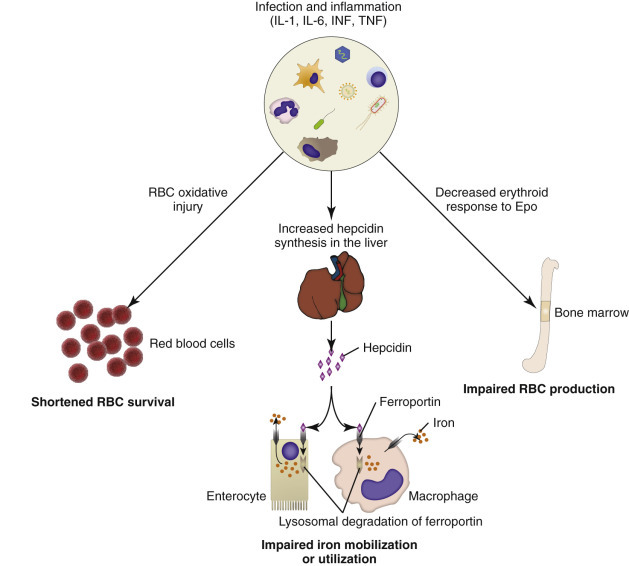Figure 13-16.

Mechanisms of Anemia in Inflammatory Diseases.
Inflammatory mediators, including interleukin-1 (IL-1), interleukin-6 (IL-6), interferon (INF), and tumor necrosis factor (TNF), cause anemia of inflammatory disease due to oxidative hemolysis, iron sequestration within enterocytes and macrophages, and impaired erythroid responsiveness to erythropoietin (Epo). During homeostasis the membrane transport molecule, ferroportin, transports iron from the cytosol to the extracellular space. The iron is then used for various physiologic processes, including hemoglobin production within bone marrow erythroid precursors. During times of inflammation the liver increases production of hepcidin, which binds ferroportin and causes its internalization and lysosomal degradation. With fewer membrane ferroportin molecules, less iron is absorbed from the diet and mobilized from macrophages. RBC, Red blood cell.
(Courtesy Dr. K.M. Boes, College of Veterinary Medicine, Virginia Polytechnic Institute and State University; and Dr. J.F. Zachary, College of Veterinary Medicine, University of Illinois.)
